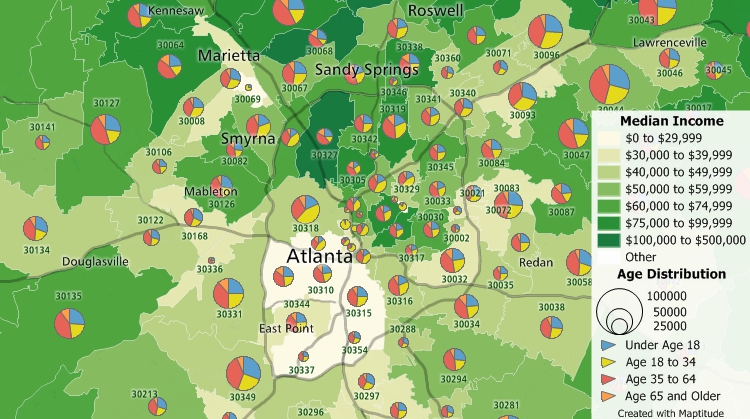
The first link you gave describes a 'Zip by DMA' product: 'The ZIP by DMA database provides ZIP Code listings within U.S. Counties by DMA region.' Isn't that what you want? The tool allows you to do exactly that. Type it in, press ‘Map 3 Digit Zip’ and you know the boundaries immediately. Also, note that it allows you to enter in multiple 3-digit zip zones. Suppose you have 25 addresses to visit and need to find the optimal way to do so. OptiMap allows you to do just that. So for me I ended up buying the data from TRUCK ADS® U.S. Designated Market List 1 (800) TRUCKAD™ You'll get 400+ excel files for each DMA. I then used a macro to merge them all into one very large excel file. Our mapping software is designed to be user friendly and intuitive so you can discover more about your Zip Code data with our simple and powerful features. Full Portfolio Trace out Zip Codes, Color Code Zip Codes by Category, Create a Heat Map. Cities by ZIP Code™ For more rapid delivery, please use the recommended or recognized city names whenever possible for this ZIP Code ™.
How to Draw Zip Code Boundaries on Maps
If your business serves the entirety of the United States, you may be serving nearly 42,000 zip codes. That’s an incredible amount of data to analyze and turn into a compelling story. So how do you bring it all together and still deliver an outstanding data narrative?
The answer is simple: you create a zip code map. A zip code area map outlines the boundaries of each zip code in your data set and helps you see the insights buried deep inside your numbers.
With Maptive’s mapping software, you can bring your data set to life and create beautiful, custom zip code maps within minutes, without any programming.
Common metrics like population density and median household income from the US Census are automatically available in Maptive, ready to bolster your proprietary data and develop insights into your consumers. And the geographic data is sourced from Google Maps, so you know it is the most powerful in the business.
How to Create a Zip Code Map with Maptive
Let’s create a zip code heat map showing sales density. While this is a common use case, you can use your own Excel data to map zip codes in any way that suits your needs.

Step #1: Sign up for a free Maptive trial account.

Step #2: Login and click on Create My First Map.
Step #3: Name your map, and add a description. Click Continue.
Step #4: Now, paste your data into the input area or upload your Excel spreadsheet data or import a Google sheet. For this tutorial, we’re uploading an Excel spreadsheet with our sales data.
Step #5: There are five sub-steps here. Depending on the Excel data that you want to show inside your zip code boundaries, your choices might differ.
- Select the Boundary tool (so that you can draw the zip code boundaries on your map).
- Choose US Zip Codes from the SELECT BOUNDARY TYPE field dropdown menu.
- Choose My Numerical Data from the BOUNDARY FILL TYPE field dropdown menu.
- Choose Sales from BOUNDARY FILL DATA field dropdown menu.
- Click Add Boundary.
As soon as you’re done, the page shows a map with an overlay of zip codes and sales density indicated by a range of colors. If zip codes are less useful to your business, you can also create a territory map, which will show much of the same information designation by territory.
The map automatically includes customizable info popups for your boundaries. You can see the popup showing the zip code’s population, its median individual and family income, and the number of locations that fall within it.
Once you have created a map, share it with your team or export and add it to your presentation. No one has to be stat-savvy to understand what the data is telling (or showing) when you use a map!

Why Are Zip Code Maps Useful?
Zip code maps enforce an automatic boundary associated with publicly available data and therefore make your data easier to read, analyze, and use. With census data, you can fill in the gaps in your own knowledge and data set to develop strategies for sales, marketing, real estate, and
This is exactly why they make excellent choices for use cases around dozens of marketing, sales, and logistics data visualizations.
For example, if you use zip codes to map the sales territories of your salespeople, they’ll know the region they’re accountable for and you can measure performance, study trends, and strategize.
Free Zip Code Dma Mapping Software Download
In addition to supporting zip code boundaries, Maptive also lets you draw a host of other geographical boundaries on your maps at the block, county, city, state, and even at the country level.